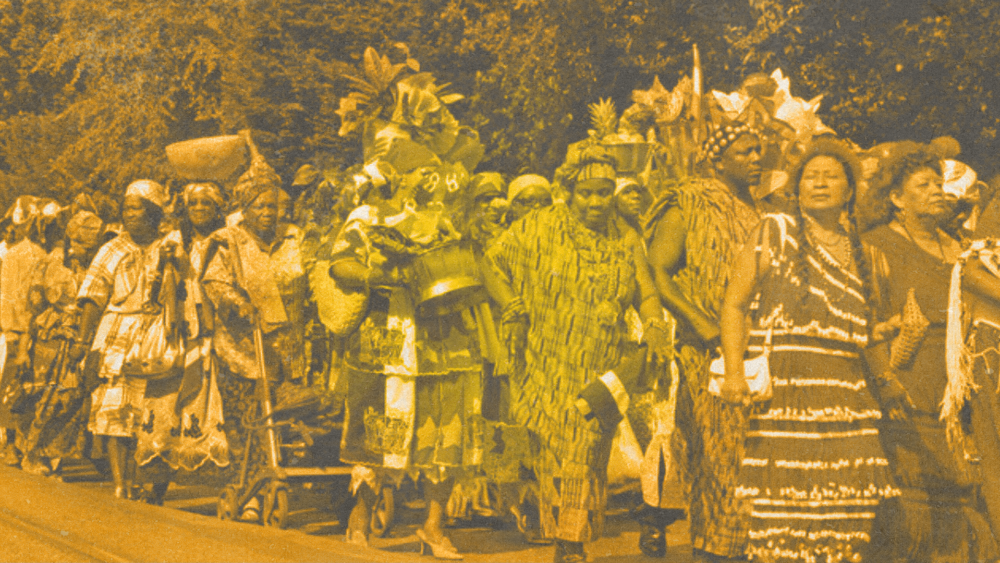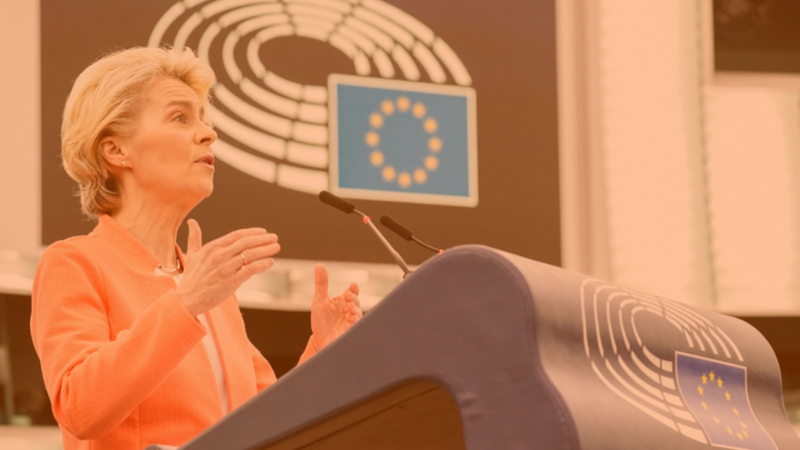Mikko Karjalainen provides a rich summary of the history of Keti Koti as well as the larger topic of post-slavery racial discourse in the Netherlands
July 1 marked the 150-year celebration of the emancipation of the enslaved in the Dutch ‘West-Indian’ colonies, Suriname and the Caribbean islands Aruba, Bonaire, Curacao, Saba, St. Eustatius and St. Maarten. Transatlantic slavery was abolished in most regions in the 19th century, and that was also the case for the Netherlands and its colonies. Most of the readers – even the Dutch ones – are probably more familiar with the history of North American slavery, as it has been the subject of an increasing number of films and literature. The abolishment of slavery in the Netherlands has a particular history, which is tied to the particular forms of racism in this country, such as the Zwarte Piet figure.
The Dutch Emancipation movement
We humans are particular in our ability for cognitive dissonance – maintaining contradictory views or ideas simultaneously – but the enslavement of other humans required nothing less than a collective self-brainwashing. It required a dehumanisation of the Africans as well as selective reading of some biblical scriptures to legitimise the commodification of other human beings for the gain of the emerging capitalist economies.
The struggle for freedom has been as long as slavery itself. Enslaved people have escaped whenever possible wherever slavery has been practiced, often helped by the native folks of their region. They have formed Maroon communities, which have again helped more enslaved with their escape. Perhaps the most famous Maroon communities were those who played a part in the birth of Jazz in New Orleans, but they developed distinct cultures everywhere they formed, including in the former Dutch colonies.
Revolts have also been rather common wherever slavery was practised. Due to the labour-intensive nature of the economy of the time, the enslaved outnumbered their masters in most places. This made revolts a constant threat to the plantation owners and lead many of them to use excessive violence to manage their enslaved labour as well as to punish them for any disobedience.
In the former Dutch Caribbean colonies, the best known revolt was that led by Tula in Curaçao, 1795. It was inspired by the uprising in Haiti that led to the end of slavery there. It is also seen as the beginning of the end of slavery in the Dutch colonies. In Curaçao, not July 1 but August 17 – the date the Tula revolt began – is celebrated as the ‘Day of Freedom.’ The Curaçaoans prefer celebrating the date they claimed their freedom rather than the date freedom was ‘given’ to them.
In all the colonising countries, there was always a group of people – albeit in the beginning small and without power – who resisted the temptation to reap the benefits of their privilege afforded to them by institutionalised slavery, or at least were uneasy about it. These abolitionists continued to oppose the system. The above-mentioned revolts helped convince the powers of the day that slavery was not a viable economic practice.
A recent study commissioned by NiNsee, National Institute of Dutch Slavery Past and Heritage, analyses the parliamentary debate about abolishing slavery. Slavery in the Dutch colonies was established before the Netherlands actually became a sovereign state; it was written in the laws of the country, but these laws did not come about through democratic processes. When the first negotiations for the abolishment of slavery started in 1833, it was considered important that the laws abolishing slavery be democratically constituted.
Slavery was increasingly seen as a thing of the past and no longer fitting the ‘values’ of modern society – to use contemporary terminology. The Dutch followed European development after Great Britain (1833) and France (1848) had already abolished slavery. The NiNsee report describes the debate leading to the abolition as one that recognised slavery as a shameful institution for the time and age. The most time, however, was spent discussing the compensation to the slave owners and their possibilities to continue their business – by bringing indentured labour from India. As Klinkenberg (2007: 103) mentions:
“The major economic factor in delaying abolition was the Dutch treasury’s lack of available funds to pay for indemnification of the slave-owners. In the end, the funds were derived from the booming Javanese economy. Exploited East Indian labourers paid for the emancipation of enslaved West Indians.”
The NiNsee report (vi) lists the following compensations to be paid to the slave owners in the Dutch Caribbean colonies: f 300 per enslaved labourer for the slave owners in Suriname and f 250 for Curaçao, Bonaire, Aruba and St. Eustatius, f 200 for Saba and f 150 for St. Maarten.
The law to abolish slavery in all Dutch Caribbean colonies was signed on 8 August 1862 and stated that slavery would be abolished in all the colonies on 1 July 1863. As most of the islands had relatively few enslaved labourers, they did indeed gain their freedom on that date. For Suriname, however, a ten year ‘transition’ period was considered necessary. This entailed that freedom to the enslaved came only on 1 July 1873 and this is why, on July 1, we celebrate the 150-year anniversary of Keti Koti – breaking of the chains.
Zwarte Piet and structural racism in the Netherlands
Zwarte Piet – also called Black Pete in English – can be traced back to 1850 in the published children’s book St Nicholas and his servant by Jan Schenkman. According to John Helsloot, St Nicholas had been depicted with a servant once before, but this is the first time the servant is Black. The tradition of St Nicholas (Sinterklaas) celebration in the Netherlands had come under threat in recent decades, as the German Christmas festivities were seen as more civilised. St Nicholas was already upgraded from his rural Amiable Gerrit (Beminnelijke Gerrit) figure that came to scare the kids to the bishop-like St Nicholas who came bearing gifts to the nice children. Schenkman’s book added the Black servant figure to the tradition in a seemingly innocent way, but in a contrast to the anti-slavery debate taking place at the same time.
Regardless of Schenkman’s intentions, the Zwarte Piet figure soon gained unmistakably African physical features. The story was that he was black as he went through the chimneys to deliver presents for kids. However, this doesn’t explain the caricatural thick, red lips and African-style jewellery and black, curly hair Zwarte Piet is frequently depicted with.
Coming to terms with the slavery past
Dutch society has always been diverse and multicultural. As one of the earliest adopters of capitalism and intercontinental trade through colonisation – including slave labour in the colonies – the Dutch realised early on that diversity is ‘good for business.’ They also saw the value in taking care of their poor to prevent unrest, as it helped to deal with economic crisis.
As colonial imperialism in general came to an end during the 20th century, many countries saw their ethnic makeup change as people from the former colonies used their right to move to the European former colonising countries. After the Second World War and the independence of Indonesia, the Netherlands received a lot of people from that region; mainly Indonesians who had supported the Netherlands in the War of Independence as well as the former Dutch colonisers.
With Suriname, the development was quite different. Suriname actually gained their independence in 1975 partly in order to curb immigration since, as Dutch citizens, they were free to migrate to the Netherlands. Until the 1970s, most immigration from Suriname had been students from the upper classes, but increasing numbers of working-class Surinamese were beginning to migrate to the Netherlands. Furthermore, the Surinamese were given five years from the country’s independence to choose between Dutch nationality – allowing them either free movement to the Netherlands or Surinamese nationality if they preferred to stay.
The policy of the Labour government inaugurated in 1973 to curb Surinamese immigration by granting the country independence is generally considered a failure because such immigration actually increased considerably after independence. To make matters worse, the official policy didn’t recognise immigration at all, as a white paper from 1983 on ethnic minority policies confirmed.
With this troubled relation to immigration, it is no wonder that racism has been present but ‘flying under the radar’ in Dutch society. Philomena Essed was one of the first academics to study racism in the Netherlands. She approached it from the perspective of daily experiences of black women. In her ground-breaking PhD dissertation she exposed structural racism in the Netherlands; in the way the police works (racial profiling), in housing, education and the labour market. Essed has continued her work in this field, holding various academic and political positions. In 2015 she edited a collection of essays titled Dutch Racism, which caused quite a stir again.
Essed paved the way to a number of Dutch authors and activists that entered the public sphere and started to slowly but surely change the white Dutch attitudes towards aspects of their history and the covert racism in society. Just to mention a few, Gloria Wekker’s White Innocence (2016) describes what we might now call a ‘snowflake’ attitude towards white privilege; how white people are often quick to claim innocence when even hinted at being in a privileged position, let alone being racist. Anousha Nzume continued on this topic in Hallo, witte mensen (2017).
Changing views
The Netherlands has slowly started to come to terms with its darker past in the last decades. For the commemoration of Keti Koti in 2002 Queen Beatrix revealed the National Monument for the Slavery Past in Amsterdam. In 2003, the aforementioned NiNsee was founded to facilitate research into this part of Dutch heritage and all its repercussions.
In 2011, a group of young black scholars founded New Urban Collective aimed at promoting historical awareness with the back youth in the Netherlands. One of the founders, Mitchell Esajas, co-authored the above-mentioned NiNsee report and also heads the Black Archives, dedicated to black Dutch heritage. Esajas also co-founded the activist organisation Kick Out Zwarte Piet which organises yearly demonstrations against the blackface tradition and is generally active in the antiracism struggle.
The official recognition of structural racism in the Netherlands has been slow. In 2013, prime minister Rutte was still of the opinion that “Zwarte Piet is just black.” In 2020, he said he had come to reconsider his position after talking to people who found Zwarte Piet extremely discriminating. However, he still thought that Zwarte Piet as a character is not racist and that it’s not the government’s place to intervene with the tradition.
Official recognition and excuses
Not quite unlike the emancipation movement a few centuries ago, the recognition of racism in its many forms has been gradual in the Netherlands. The yearly Kick Out Zwarte Piet demonstrations have kept the issue in the public consciousness. They have grown rather tense in recent years, resulting at times in court cases that have further prolonged the attention – as well as solicited reactions from the politicians, as mentioned. Last year’s anti-Zwarte Piet protest in Staphorst even ended in violence against the anti-racist protestors, with the police standing by and doing nothing.
In a quite unanticipated move late last year, the government decided to offer official excuses for the slavery. To increase the confusion, the news of this leaked to the press. The reasoning behind the timing was the 150-year celebration of Keti Koti this summer, but the fact that no stakeholders were consulted ahead of this announcement was not appreciated by many.
Expectations were high in anticipation for a royal apology for slavery at the official Keti Koti commemoration in Amsterdam, where the king was scheduled to give a speech. When it did actually happen, the reception was emotional. It was a very welcome gesture and gives further grounds for the National Year of Commemoration of the Slavery Past. This should help Dutch society engage in proper discussions about its past and build up on a healthy basis that takes into account the painful past and how it affects the present.
Do you want to be informed of DiEM25's actions? Sign up here















